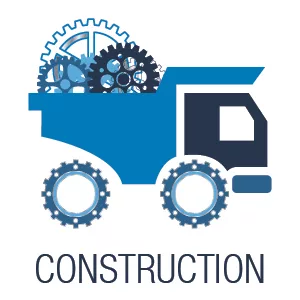Labor issues contribute to construction slowdown
Single-family permits declined along with total units in 2023

Insufficient labor availability, declining building permit totals, and high building costs have been major factors contributing to a slowdown of Spokane-area construction this year, according to some industry representatives who say these conditions are expected to continue in 2024.
Residential construction in Spokane County has slowed this year, with a 28% decline in single-family building permits issued from Jan. 1 to Oct. 31, compared with the year-earlier period, says Joel White, executive officer of Spokane Home Builders Association.
"In 2022 through Oct. 31, we had 1,351 building permits throughout Spokane County. This year, we're down to 969, so it's a significant decrease," White says. "Total units are down as well (because) we didn't build as many apartments and duplexes."
According to data provided to White by the Construction Monitor, there were 1,865 multifamily units permitted through November this year, down 14.5% from 2,181 multifamily units permitted in the year-earlier period.
Residential new construction isn't keeping up with demand this year due to increasing land prices and other building costs, White says. Homebuyer affordability likely will remain a challenge next year as a result.
Additionally, White says a slowdown of new buyers moving to the Spokane market this year has resulted in a shift by some Spokane-based building companies to residential construction in Kootenai County.
In the city of Spokane, new and ongoing public works construction projects will total about $110 million in 2024, says Marlene Feist, public works director for the city.
Just over a half-dozen ongoing public works projects from 2023 are valued at about $30 million and include the Post Street Bridge replacement, which is expected to open in the spring; a new water reservoir at the Spokane International Airport; and the completion of the South Gorge Trail connection, says Feist.
Thirteen new public works projects valued at about $80 million are scheduled next year, including planned traffic-calming and grind-and-overlay activities and new projects to address water system improvements and to enhance connectivity for pedestrians, bicyclists, and drivers, Feist says.
Construction is expected to begin in the spring on the installation of three new water tanks, including one in Latah Valley. Repair work also will begin on the Stevens-Washington bridges downtown, and the city will return to work on the Thor and Freya street intersections at Second and Third avenues next year, says Feist.
Infrastructure projects at the state and local level and private multifamily developments kept the commercial construction industry busy this year, says Cheryl Stewart, executive director of the Associated General Contractors Inland Northwest chapter.
"On the private side, most of (the work) was multifamily. We had a few warehouses and office stuff, but not a lot," Stewart explains. "Material prices started to drop in the later half of the year, along with inflation. We're seeing lower lead times on materials now, which is helping."
Stewart says she expects labor availability in 2024 will be a major challenge for contractors, who also will have to contend with new apprenticeship utilization requirements mandated by the state beginning in July.
Despite headwinds, many contractors here have an optimistic outlook for general construction work in the new year, however the forecast is concerning for transportation-related contractors who work on projects for the Washington state Department of Transportation, she says.
"DOT's budget (is impacted by) federal infrastructure money, a lot of which ... just hasn't hit the streets yet," says Stewart. "The local office at this point is not going to have anything out to bid in 2024, unless the Legislature does something."
Stewart says the market can expect to see fewer bidders on public projects due to a combination of high material prices, labor costs, and labor availability.
"A company that might take 10 projects in the past can only take on eight now because of the workforce they have," she says.


_c.webp?t=1763626051)
_web.webp?t=1764835652)

